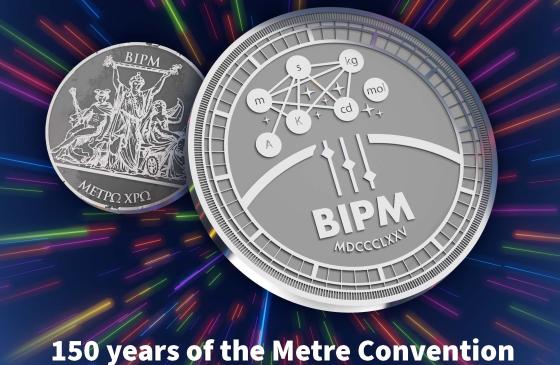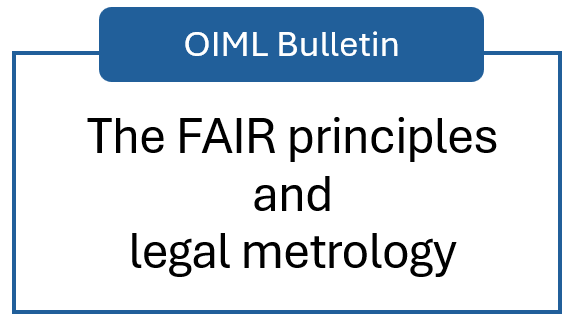OIML BULLETIN - VOLUME LXVI - NUMBER 3 - July 2025
e v o l u t i o n
FAIR principles and legal metrology
Editorial
Sascha Eichstädt 1 and Janet R. Miles
2
1. PTB , Braunschweig, Germany
2. BIML
Citation: S. Eichstädt and J.R. Miles 2025 OIML Bulletin LXVI(3) 20250300
The digital revolution is underpinning a substantial transformation in economy and society. Digital technologies are involved in many aspects of our lives – from business and communication to socializing! Although the technological infrastructures in the background are largely invisible, they form the basis for a successful digital transformation.
Consider electronic payment methods for example. For the end-user the process is simple and requires just a few seconds. In the background, a contactless payment generally uses near-field communication (NFC) smartphone technology and relies on a digital infrastructure for authentication, data communication, data processing, and data storage. Standardized interfaces, data formats and authentication methods enable interoperability between different vendors.
As another example, consider digital photography using a modern smartphone. When taking a photograph, information from camera settings, time stamps, location sensors, etc., are stored in a standardized set of metadata. Additional information may be added automatically by algorithms based on the actual content of the image, along with further information such as contacts. In this way, a search query for images taken during the evening in Uganda with Ben and Nici can return the pictures matching the criteria.
Automated processes based on standardized interfaces, digital infrastructures and harmonized data formats are also an important topic in legal metrology. The ability to quickly and easily access information about a given product is of particular interest in legal metrology, and thus a key aim of digitalization efforts. For this to be possible requires that information, services and data can be found easily; can be accessed for processing and used in an interoperable way; and can be reused for reasonable purposes that may not have been considered when the data were generated initally. In brief, data and services should be provided in accordance with the FAIR principles. For metrology purposes, this also requires a suitable level of data quality and traceability of the data.
In this issue of the OIML Bulletin, authors from around the world give insights about machine-readable information, digital infrastructures, remote services, and a metrological perspective on the FAIR principles. The articles demonstrate the wide range of topics considered as part of the digital transformation in legal metrology.






